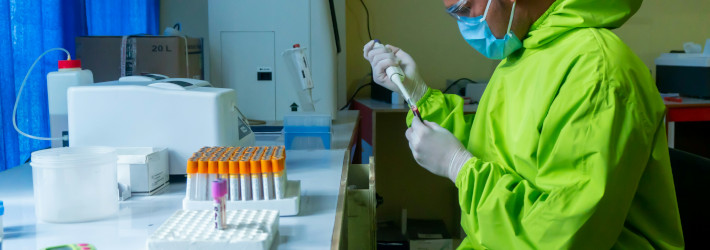PTAB Denies Samsung Bioepis and Formycon’s IPR Petitions Under Fintiv
On June 2, 2025, the Patent Trial and Appeal Board (“Board”) issued decisions denying institution of Samsung Bioepis’s IPR2025-00176 and Formycon’s IPR2025-00233 against claims 1–12, 14–17, 19, 20, 22–36, 39–42, 44, 45, and 47–55 of Regeneron’s U.S. Patent No. 11,084,865 (“the ’865 patent”). It also denied Formycon’s request for joinder with IPR2025-00176 given the institution denial. Celltrion’s IPR2025-00456 against the ’865 patent, filed in January 2025, raising different grounds of unpatentability for a largely overlapping set of challenged claims, is still awaiting an institution decision (previously reported Celltrion Files IPR on Regeneron’s EYLEA® Patent). The ’865 patent relates to “pharmaceutical formulations suitable for intravitreal administration comprising agents capable of inhibiting vascular endothelial growth factor (VEGF), and to methods for making and using such formulations.” The IPRs relate to Samsung Bioepis and Formycon’s EYLEA® (aflibercept) biosimilars Opuviz™ (aflibercept-yszy) and Ahzantive® (aflibercept-mrbb) and Celltrion’s proposed EYLEA® biosimilar CT-P42.
The Board exercised its discretion under 35 U.S.C. § 314(a) to deny institution of the Petitions, citing the numerous co-pending litigations involving the ’865 patent, including Regeneron v. Mylan, Case No. 1:22-cv-00061 (N.D.W. Va.) / MDL 1:24-md-03103 (N.D.W. Va.), that found claims 4. 7, 9, 11, and 14-17 (all of which are at issue in the IPRs) are invalid under 35 U.S.C. §§ 102, 103, or 112 after a 9-day bench trial (previously reported EYLEA® (aflibercept) and Soliris® (eculizumab) IPR and BPCIA Litigation Updates) (appeal dismissed due to settlement). The Board also noted that the district court had issued preliminary injunctions based on the ’865 patent against both Petitioners, as well as Celltrion, and that the Federal Circuit had affirmed the decisions.
In analyzing the Fintiv factors, the Board cited the fact that no stay of the ongoing MDL proceedings had been requested or granted; the substantial investment of the district court in trial and preliminary injunction proceedings that included several overlapping issues and almost 1,000 pages of opinions; Petitioners’ delay in filing their IPRs; the substantial overlap of issues between the district court proceedings and the IPRs; that the Petitioners and Patent Owner are all parties to the MDL; and the strength of the arguments; all favored discretionary denial. The fact that more claims are at issue in the IPRs than in the district court proceedings did not materially affect the Board’s analysis based on the Board’s determination that the additional claims raised the same disputed and overlapping issues. The Board determined that while Sotera stipulations had been filed, they were not effective in mitigating the overlapping issues because Petitioners were not prevented from litigating the same obviousness grounds cited in their IPRs in their obviousness-type double patenting arguments in the district court, and the other litigants in the MDL remained free to litigate the same grounds as Petitioners did in their IPRs.
The single factor the Board determined weighed against discretionary denial was that a trial date has not yet been set, and may occur after a Final Written Decision, but nevertheless held that the analysis of all the Fintiv factors weighed in favor of discretionary denial.
These denials come as part of a wave of IPR discretionary denials over the last few months after Acting Director Coke Morgan Stewart became head of the PTAB and rescinded a previous guidance memorandum (“Interim Procedure”) from Director Vidal concerning the discretionary denial standard under Fintiv. The recission resulted in the restoration of the PTO’s discretionary denial policy in place prior to former Director Vidal’s Interim Procedure, which included applying the Board’s precedential decisions in Apple Inc. v. Fintiv, Inc., IPR2020-00019, Paper 11 (PTAB Mar. 20, 2020) and Sotera Wireless, Inc. v. Masimo Corp., IPR2020-01019, Paper 12 (PTAB Dec. 1, 2020).
In a March 24, 2025 guidance memorandum (“Guidance on USPTO’s recission of ‘Interim Procedure for Discretionary Denials in AIA Post-Grant Proceedings with Parallel District Court Litigation’”) issued after the rescission, the Acting Director noted that the Fintiv factors will also apply when there is a parallel proceeding at the International Trade Commission (“ITC”), and that while a Sotera stipulation and compelling merits will be highly relevant in the Fintiv analysis, neither will be dispositive in determining whether to institute a post-grant proceeding.
On March 26, 2025, the Acting Director issued an Interim Process for PTAB Workload Management, creating a bifurcated process for (i) discretionary and (ii) merits / non-discretionary statutory considerations, where the Director, in consultation with at least three PTAB judges, will first determine whether discretionary denial is appropriate. If it is, the Director will issue an opinion. If it is not, then the Director will refer the case to the three-member panel to issue an institution decision on the merits / non-discretionary statutory considerations. Discretionary denial briefing was given a separate word limit of 14,000 words to each of the Patent Owner and Petitioner to address discretionary denial issues, and a 5,600 word reply.
While discretionary denials under Fintiv had decreased to zero by the beginning of 2025, the recission of Former Director Vidal’s Interim Procedure guidance and the issuance of new guidance, has significantly changed the rate of discretionary denials. According to a report by Unified Patents, in March 2025, 8 of 31 (26%) petitions addressing the Fintiv factors were denied based on analysis of the factors, and in April that increased to 29 of 42 (69%) denials based on these factors.
Regeneron Files Nineth BPCIA Litigation Against EYLEA® Biosimilar
On June 17, 2025, Regeneron filed a second BPCIA lawsuit (2:25-cv-05499 (C.D. Cal.)) against Amgen’s EYLEA® biosimilar Pavblu™ (aflibercept-ayyh). This lawsuit alleges infringement of Regeneron’s newly issued U.S. Patent No. 12,331,099 (“the ’099 patent”) claiming ophthalmic formulations of a glycosylated VEGF antagonist fusion protein.
The patent application that issued as the ’099 patent was filed the day after the CAFC’s October 22, 2024 decision (CAFC Appeal No. 24-2351) denying a temporary injunction that would have prevented Pavblu™ from launching at-risk while Regeneron appealed the district court’s denial of the preliminary injunction. The CAFC has since affirmed the denial of the preliminary injunction (previously reported Federal Circuit Affirms Preliminary Injunction Decisions for EYLEA® Biosimilars).
According to the Complaint, because this patent issued after the deadline to amend the Complaint in the first action against Amgen (1:24-cv-00039 (N.D.W. Va.) / MDL 1:24-md-03103 (N.D.W. Va.)), Regeneron filed a second complaint. Regeneron stated that it will petition the U.S. Judicial Panel on Multidistrict Litigation to transfer the action to the Northern District of West Virginia and consolidate it with the other EYLEA® biosimilar cases pending in MDL 1:24-cv-03103 (N.D.W. Va.).
As of this writing, Regeneron has not filed litigations asserting the ’099 patent against the other biosimilars involved in the MDL, most of which are under permanent or preliminary injunctions preventing their launch, including Samsung Bioepis’s Opuviz™, Formycon’s Ahzantive®, Celltrion’s CT-P42, and Mylan / Biocon’s Yesafili™ (aflibercept-jbvf). Amgen launched Pavblu™ in October 2024 after the district court (Case No. 1:24-cv-00039 (N.D.W. Va.) / MDL 1:24-md-03103 (N.D.W. Va.)) denied Regeneron’s request for a preliminary injunction (previously reported Amgen Launches Pavblu™ as the First EYLEA® Biosimilar in the U.S.).
Regeneron reported EYLEA® U.S. sales of $4.767 billion in FY2024.
For more information about these and other biosimilar patent disputes, please visit BiologicsHQ.
_____________________________________________________
The author would like to thank April Breyer Menon for her contributions to this article.


